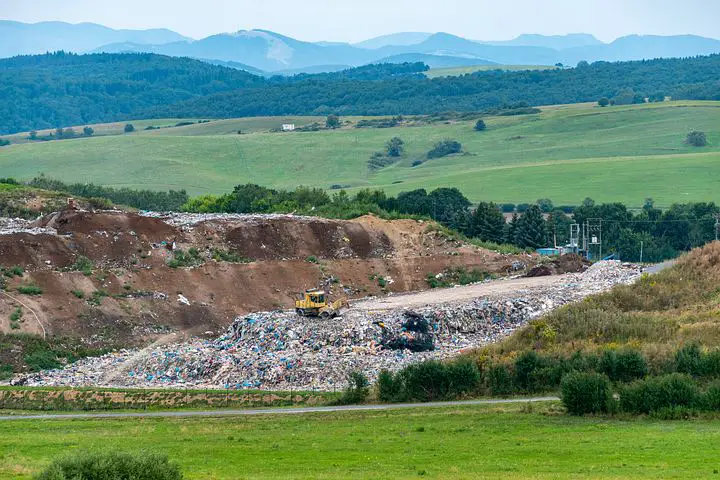Hazardous waste refers to any waste material that poses a threat to human health or the environment due to its toxic, flammable, corrosive, or reactive properties. This waste can come from various sources, including industrial processes, medical facilities, laboratories, and households.
Examples of hazardous waste include chemical wastes from manufacturing processes, batteries, electronic waste, medical waste, and radioactive materials. If not properly managed, hazardous waste can cause serious harm to living beings and the environment.
To manage hazardous waste, it is essential to follow proper disposal procedures, including segregation, transportation, treatment, and disposal in specialized facilities that are designed to handle these materials safely. Government agencies typically regulate the management of hazardous waste to minimize the risk of harm to human health and the environment.
It is important to note that hazardous waste should be managed in a way that prioritizes its safe and responsible disposal rather than attempting to derive products from it. However, there are some instances where hazardous waste can be treated or processed to create useful products or materials.
The Products Derived From Hazardous Waste

Some examples of products that can be derived from hazardous waste include:
(1) Fuel
Some hazardous wastes, such as certain types of solvents and oils, can be processed and refined to create fuel. This process is known as hazardous waste-derived fuel (HWDF) and is typically used in industrial boilers or cement kilns.
Converting hazardous waste into fuel can be a promising solution to address both waste management and energy needs. This process is commonly known as hazardous waste-to-energy (WTE) or waste-to-fuel (WTF) conversion.
The process of converting hazardous waste into fuel involves several steps. The waste is first sorted and classified according to its chemical composition and physical properties. Then, it undergoes various treatments, such as thermal or chemical treatment, to break down its components into useful fuel products.
The resulting fuel products can include gases, liquids, and solids that can be used for energy production, such as in power plants or industrial processes. These fuel products can include syngas, liquid fuels like diesel or gasoline, and solid fuels like pellets or briquettes.
Hazardous waste-to-energy conversion has the potential to reduce the environmental impact of waste disposal by reducing the amount of waste that ends up in landfills or incinerators. It can also help to reduce the use of fossil fuels and their associated emissions by providing an alternative source of energy.
However, it is important to ensure that the hazardous waste-to-energy conversion process is properly regulated and monitored to prevent any negative impacts on the environment or human health. It is also crucial to prioritize waste reduction and recycling efforts before considering hazardous waste-to-energy conversion as a solution.
Read Also: The Products Derived From Food Waste
(2) Fertilizer
Certain types of hazardous waste, such as sewage sludge and industrial waste, can be treated and processed to create fertilizers. These fertilizers are used in agriculture to enrich the soil with nutrients.
Using hazardous waste as fertilizer can be dangerous and potentially harmful to both the environment and human health. Hazardous waste often contains toxic substances, such as heavy metals, pesticides, and other chemicals that can contaminate soil, groundwater, and plants. Therefore, it is not recommended to use hazardous waste as fertilizer.
Instead, the proper disposal of hazardous waste should be strictly followed according to local regulations and laws. Hazardous waste can be treated and disposed of safely using specialized methods, such as incineration, landfilling, or chemical treatment, to minimize the risks of environmental contamination and human exposure.
Furthermore, sustainable alternatives to chemical fertilizers, such as organic fertilizers or compost, can provide nutrients to plants without harmful environmental impacts. These alternatives can also promote soil health and reduce the risk of soil degradation, which can lead to long-term benefits for the ecosystem and human health.
Read Also: The Products Derived From Electronic Waste(E-Waste)
(3) Construction materials
Some hazardous wastes, such as certain types of ash from waste-to-energy facilities, can be used as a component in the production of construction materials like bricks or concrete.
The use of hazardous waste as a source of construction materials can be a beneficial approach to waste management while also promoting sustainability in the construction industry. Here are some examples of construction materials that can be derived from hazardous waste:
Fly Ash: Fly ash is a byproduct of coal combustion in power plants, and it contains trace amounts of heavy metals and other toxic compounds. However, when it is mixed with cement, it can increase the durability and strength of concrete, making it a popular additive in construction.
Slag: Slag is a byproduct of metal smelting and refining, and it can contain hazardous substances such as heavy metals and radioactive materials. However, it can also be used as a substitute for natural aggregates in concrete, and it has been shown to improve the durability and strength of the resulting concrete.
Recycled Plastic: Plastic waste is a major environmental concern, and recycling it into construction materials can help divert it from landfills and reduce its impact on the environment. Plastic lumber, for example, is made from recycled plastic and can be used in place of traditional lumber in construction projects.
Recycled Glass: Glass waste can be recycled and used as a substitute for traditional aggregate in concrete, which can increase the strength and durability of the resulting material. Glass cullet can also be used as a substitute for sand in the production of concrete blocks.
Biodegradable Materials: Biodegradable materials such as straw bales, hempcrete, and rammed earth can be used as alternative construction materials. These materials are renewable and biodegradable, which makes them a more sustainable option compared to traditional construction materials.
The use of hazardous waste as a source of construction materials can help reduce waste and promote sustainability in the construction industry. However, it is important to ensure that these materials are properly tested and processed to ensure their safety and effectiveness in construction applications.
It is important to note that while these products may have beneficial uses, they should only be created using hazardous waste that has been properly treated and processed to remove any harmful contaminants. Additionally, the creation of products from hazardous waste should only be done in a manner that is in compliance with all relevant environmental and safety regulations.
Read Also: Why a Balanced Fitness Routine is Key to Long-Term Health and Wellness

